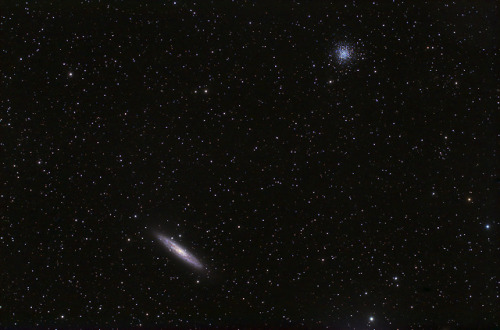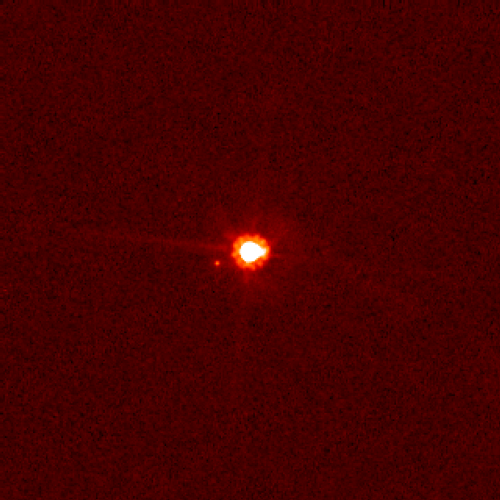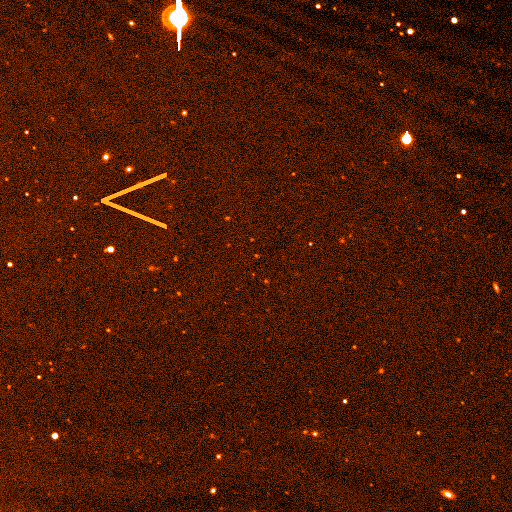“science Is Cool Sometimes” Wrong. Science Is Cool All The Time.
“science is cool sometimes” wrong. science is cool all the time.
More Posts from Astrosciencechick and Others

The Orion Bullets via NASA https://ift.tt/2VwwqDm
Why Won’t Our Parker Solar Probe Melt?
This summer, our Parker Solar Probe will launch to travel closer to the Sun than any mission before it, right into the Sun’s outer atmosphere, the corona.

The environment in the corona is unimaginably hot: The spacecraft will travel through material with temperatures greater than 3 million degrees Fahrenheit.
So…why won’t it melt?
The Difference Between Heat and Temperature
Parker Solar Probe was designed from the ground up to keep its instruments safe and cool, but the nature of the corona itself also helps. The key lies in the difference between heat and temperature.
Temperature measures how fast particles are moving, while heat is the total amount of energy that they transfer. The corona is an incredibly thin and tenuous part of the Sun, and there are very few particles there to transfer energy – so while the particles are moving fast (high temperature), they don’t actually transfer much energy to the spacecraft (low heat).

It’s like the difference between putting your hand in a hot oven versus putting it in a pot of boiling water (don’t try this at home!). In the air of the oven, your hand doesn’t get nearly as hot as it would in the much denser water of the boiling pot.
So even though Parker Solar Probe travels through a region with temperatures of several million degrees, the surface of its heat shield will reach only about 2,500 F.

The Heat Shield
Of course, thousands of degrees Fahrenheit is still way too hot for scientific instruments. (For comparison, lava from volcano eruptions can be anywhere between 1,300 to 2,200 F.)
To withstand that heat, Parker Solar Probe is outfitted with a cutting-edge heat shield, called the Thermal Protection System. This heat shield is made of a carbon composite foam sandwiched between two carbon plates. The Sun-facing side is covered with a specially-developed white ceramic coating, applied as a plasma spray, to reflect as much heat as possible.

The heat shield is so good at its job that even though the Sun-facing side of the shield will be at 2,500 F, the instruments in its shadow will remain at a balmy 85 F.
Parker Solar Probe Keeps its Cool
Several other designs on the spacecraft help Parker Solar Probe beat the heat.
Parker Solar Probe is not only studying the Sun – it’s also powered by it. But even though most of the surface area of its solar arrays can be retracted behind the heat shield, even that small exposed segment would quickly make them overheat while at the Sun.

To keep things cool, Parker Solar Probe circulates a single gallon of water through its solar arrays. The water absorbs heat as it passes behind the arrays, then radiates that heat out into space as it flows into the spacecraft’s radiator.
It’s also important for Parker Solar Probe to be able to think on its feet, since it takes about eight minutes for information to travel between Earth and the Sun. If we had to control the spacecraft from Earth, by the time we knew something went wrong, it would be too late to fix it.
So Parker Solar Probe is smart: Along the edges of the heat shield’s shadow are seven sensors. If any of these sensors detect sunlight, they alert the central computer and the spacecraft can correct its position to keep the sensors – and the rest of the instruments – safely protected behind the heat shield.

Over the course of its seven-year mission, Parker Solar Probe will make 24 orbits of our star. On each close approach to the Sun, it will sample the solar wind, study the Sun’s corona, and provide unprecedentedly close up observations from around our star – and armed with its slew of innovative technologies, we know it will keep its cool the whole time.
Parker Solar Probe launches summer 2018 on its mission to study the Sun. Keep up with the latest on the mission at nasa.gov/solarprobe or follow us on Twitter and Facebook.
Make sure to follow us on Tumblr for your regular dose of space: http://nasa.tumblr.com

I want to be taking notes.
(via Hometalk)

Celestial Buddy Earth peers out at Mother Earth from the ISS after hitching a ride on this weeks SpaceX Dragon test flight
What is a Wormhole?
Wormholes were first theorized in 1916, though that wasn’t what they were called at the time. While reviewing another physicist’s solution to the equations in Albert Einstein’s theory of general relativity, Austrian physicist Ludwig Flamm realized another solution was possible. He described a “white hole,” a theoretical time reversal of a black hole. Entrances to both black and white holes could be connected by a space-time conduit.

In 1935, Einstein and physicist Nathan Rosen used the theory of general relativity to elaborate on the idea, proposing the existence of “bridges” through space-time. These bridges connect two different points in space-time, theoretically creating a shortcut that could reduce travel time and distance. The shortcuts came to be called Einstein-Rosen bridges, or wormholes.

Certain solutions of general relativity allow for the existence of wormholes where the mouth of each is a black hole. However, a naturally occurring black hole, formed by the collapse of a dying star, does not by itself create a wormhole.
Wormholes are consistent with the general theory of relativity, but whether wormholes actually exist remains to be seen.

A wormhole could connect extremely long distances such as a billion light years or more, short distances such as a few meters, different universes, or different points in time
For a simplified notion of a wormhole, space can be visualized as a two-dimensional (2D) surface. In this case, a wormhole would appear as a hole in that surface, lead into a 3D tube (the inside surface of a cylinder), then re-emerge at another location on the 2D surface with a hole similar to the entrance. An actual wormhole would be analogous to this, but with the spatial dimensions raised by one. For example, instead of circular holes on a 2D plane, the entry and exit points could be visualized as spheres in 3D space.

Science fiction is filled with tales of traveling through wormholes. But the reality of such travel is more complicated, and not just because we’ve yet to spot one.

The first problem is size. Primordial wormholes are predicted to exist on microscopic levels, about 10–33 centimeters. However, as the universe expands, it is possible that some may have been stretched to larger sizes.
Another problem comes from stability. The predicted Einstein-Rosen wormholes would be useless for travel because they collapse quickly.

“You would need some very exotic type of matter in order to stabilize a wormhole,” said Hsu, “and it’s not clear whether such matter exists in the universe.”
But more recent research found that a wormhole containing “exotic” matter could stay open and unchanging for longer periods of time.

Exotic matter, which should not be confused with dark matter or antimatter, contains negative energy density and a large negative pressure. Such matter has only been seen in the behavior of certain vacuum states as part of quantum field theory.
If a wormhole contained sufficient exotic matter, whether naturally occurring or artificially added, it could theoretically be used as a method of sending information or travelers through space. Unfortunately, human journeys through the space tunnels may be challenging.

Wormholes may not only connect two separate regions within the universe, they could also connect two different universes. Similarly, some scientists have conjectured that if one mouth of a wormhole is moved in a specific manner, it could allow for time travel.

Although adding exotic matter to a wormhole might stabilize it to the point that human passengers could travel safely through it, there is still the possibility that the addition of “regular” matter would be sufficient to destabilize the portal.
Today’s technology is insufficient to enlarge or stabilize wormholes, even if they could be found. However, scientists continue to explore the concept as a method of space travel with the hope that technology will eventually be able to utilize them.
source
source
images: x, x, x, x, x, x, x, x, x

NGC 3372, Dusty Carina


The moon, is beautiful


Spiral Galaxy NGC253 and Globular Cluster NGC288
by Eddie Trimarchi


Eris is the most massive and second-largest dwarf planet in the known Solar System. Eris was discovered in January 2005 by a Palomar Observatory-based team led by Mike Brown, and its identity was verified later that year. In September 2006 it was named after Eris, the Greek goddess of strife and discord. Eris is the ninth most massive object directly orbiting the Sun, and the 16th most massive overall, because seven moons are more massive than all known dwarf planets.
Eris is a trans-Neptunian object (TNO) and a member of a high-eccentricity population known as the scattered disk. It has one known moon, Dysnomia. (Eris and Dysnomia are seen in the first image).
source
-
 notanrp-wow liked this · 10 months ago
notanrp-wow liked this · 10 months ago -
 mythweavcr reblogged this · 3 years ago
mythweavcr reblogged this · 3 years ago -
 chr-notfound reblogged this · 3 years ago
chr-notfound reblogged this · 3 years ago -
 thvnderstcrm reblogged this · 4 years ago
thvnderstcrm reblogged this · 4 years ago -
 sixersigned reblogged this · 4 years ago
sixersigned reblogged this · 4 years ago -
 alphaternal liked this · 4 years ago
alphaternal liked this · 4 years ago -
 ssunshin3 reblogged this · 5 years ago
ssunshin3 reblogged this · 5 years ago -
 sepublic liked this · 5 years ago
sepublic liked this · 5 years ago -
 irazel liked this · 5 years ago
irazel liked this · 5 years ago -
 verona-flowers liked this · 5 years ago
verona-flowers liked this · 5 years ago -
 enemyoflawns liked this · 5 years ago
enemyoflawns liked this · 5 years ago -
 hellspersonalcurator liked this · 5 years ago
hellspersonalcurator liked this · 5 years ago -
 lovingikesen reblogged this · 5 years ago
lovingikesen reblogged this · 5 years ago -
 rowanexploringtheuniverse reblogged this · 5 years ago
rowanexploringtheuniverse reblogged this · 5 years ago -
 geekadorkable reblogged this · 5 years ago
geekadorkable reblogged this · 5 years ago -
 geekadorkable liked this · 5 years ago
geekadorkable liked this · 5 years ago -
 a-polite-melody reblogged this · 5 years ago
a-polite-melody reblogged this · 5 years ago -
 rikki-tiki-tavi reblogged this · 5 years ago
rikki-tiki-tavi reblogged this · 5 years ago -
 meanderfall reblogged this · 5 years ago
meanderfall reblogged this · 5 years ago -
 chaotic-inattentive reblogged this · 5 years ago
chaotic-inattentive reblogged this · 5 years ago -
 bitchking-of-angmar liked this · 5 years ago
bitchking-of-angmar liked this · 5 years ago -
 xmalpracticex liked this · 5 years ago
xmalpracticex liked this · 5 years ago -
 unmecha reblogged this · 5 years ago
unmecha reblogged this · 5 years ago -
 unmecha liked this · 5 years ago
unmecha liked this · 5 years ago -
 bigsloppycrush liked this · 5 years ago
bigsloppycrush liked this · 5 years ago -
 chihiro-okami reblogged this · 5 years ago
chihiro-okami reblogged this · 5 years ago -
 chihiro-okami liked this · 5 years ago
chihiro-okami liked this · 5 years ago -
 lake-shark reblogged this · 5 years ago
lake-shark reblogged this · 5 years ago -
 lay-doubt-to-rest liked this · 5 years ago
lay-doubt-to-rest liked this · 5 years ago -
 illusion-of-sea-axes liked this · 5 years ago
illusion-of-sea-axes liked this · 5 years ago -
 simplyselenajk liked this · 5 years ago
simplyselenajk liked this · 5 years ago -
 dreamingkatfish reblogged this · 5 years ago
dreamingkatfish reblogged this · 5 years ago -
 dreamingkatfish liked this · 5 years ago
dreamingkatfish liked this · 5 years ago -
 notyouramelie liked this · 5 years ago
notyouramelie liked this · 5 years ago -
 wordcubed liked this · 5 years ago
wordcubed liked this · 5 years ago -
 rebel-inthe-streets reblogged this · 5 years ago
rebel-inthe-streets reblogged this · 5 years ago -
 rebel-inthe-streets liked this · 5 years ago
rebel-inthe-streets liked this · 5 years ago -
 a-polite-melody liked this · 5 years ago
a-polite-melody liked this · 5 years ago -
 cateringisalie liked this · 5 years ago
cateringisalie liked this · 5 years ago -
 snorri-spiderbiter liked this · 5 years ago
snorri-spiderbiter liked this · 5 years ago -
 clannfearrunt liked this · 5 years ago
clannfearrunt liked this · 5 years ago